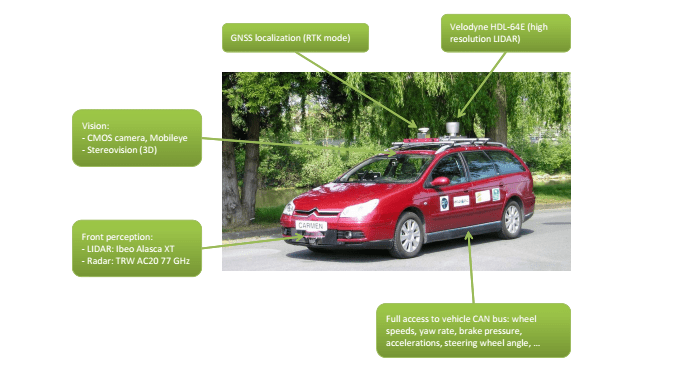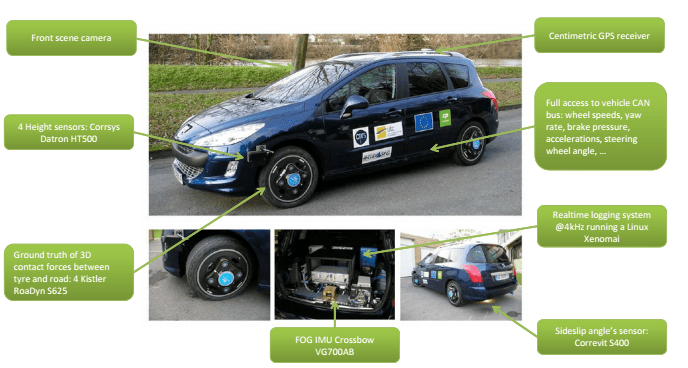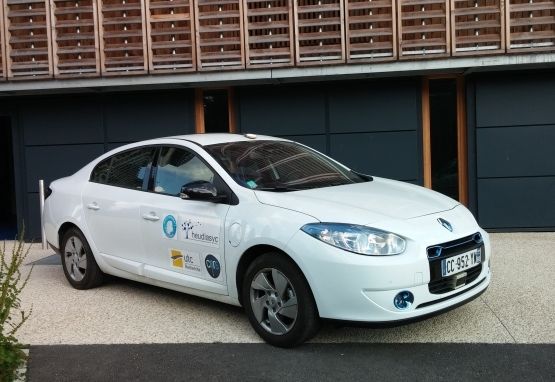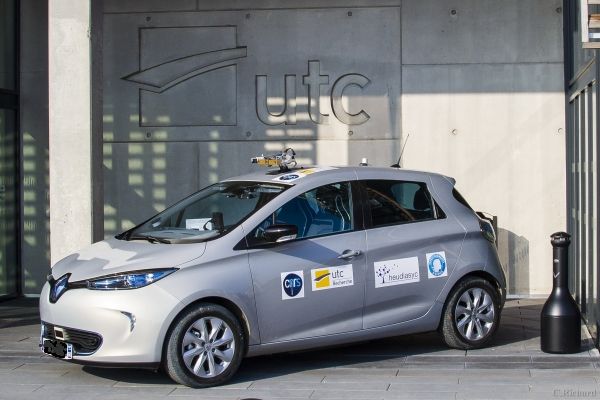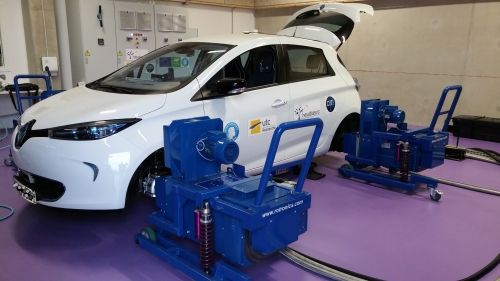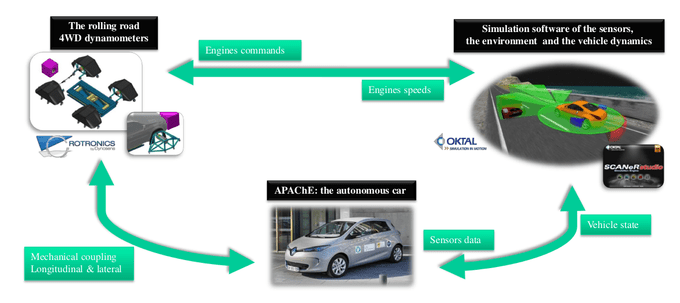Intelligent vehicles
PACPUS : Perception et Assistance pour une Conduite Plus Sûre.
Presentation
PACPUS is a technology platform for research located at the Heudiasyc UTC/CNRS Joint Research Unit.
The objective behind PACPUS is to provide tools and resources for experimenting on intelligent vehicles. It is specifically intended for the development, integration and testing of ADAS (Advanced Driver Assistance Systems) functions, particularly in relation to autonomous vehicles.
The platform comprises five experimental vehicles, together with testing facilities and software.
The platform is funded by Heudiasyc’s two supervisory institutions:
and by several public authorities :
- Hauts-de-France administative region and ERDF (European Regional Development Fund) ;
- European projects ;
- French National Research Agency R&D projects.
PACPUS is also used for joint projects with industrial partners.
PACPUS timeline
This project was initiated by :
- European Union Framework Programs for Research and Technological Development (Prometheus 1991–1994, Roadsense 2001–2004)
- French PREDIT Research and Innovation Program for Terrestrial Transport (ARCOS 2001–2004, MobiVip 2004–2007, Sari 2005–2008)
- CNRS ROBEA program (Bodega 2003–2005)
- CNRS/INRETS CHMAC Research Group (Human-Machine Cooperation for Automobile Driver Assistance 1999–2001).
In 2005 CNRS labelled PACPUS a strategic platform and helped it acquire the CARMEN testbed. CARMEN was a demonstrator in the IEEE IV2008 and IV2011 symposiums.
Vehicles
PACPUS software
The OpenSource PACPUS framework is to be found at: https://devel.hds.utc.fr/software/pacpus
Application
The VERVE european project, one of the first examples of autonomous driving by a ROBOTEX vehicle
An APAChe car performed complete cicuits of the SEVILLE test track at UTC’s Innovation Center:
UMAP Urban Mobility Advanced Platform (Renault)
Heudiasyc researchers are working with Renault to create a driverless car. The PACPUS framework is embedded in this prototype to power the localization and perception components of the system.
CONTACTS
Responsable scientifique | Véronique Cherfaoui
Tél : 03 44 23 44 87
Mail : veronique.cherfaoui@hds.utc.fr
Responsable technique | Stéphane Bonnet
Tél : 03 44 23 52 56
Mail : stephane.bonnet@hds.utc.fr




